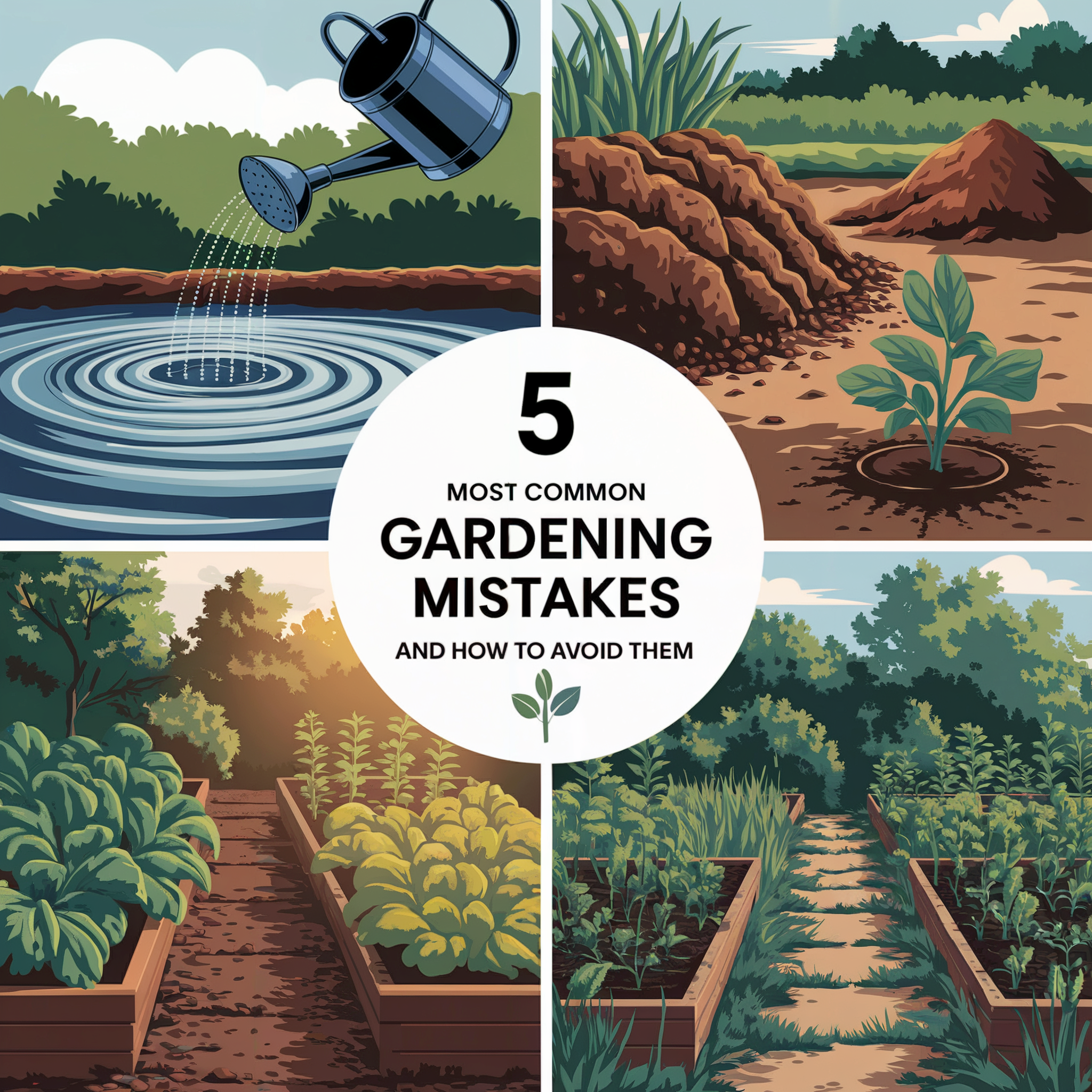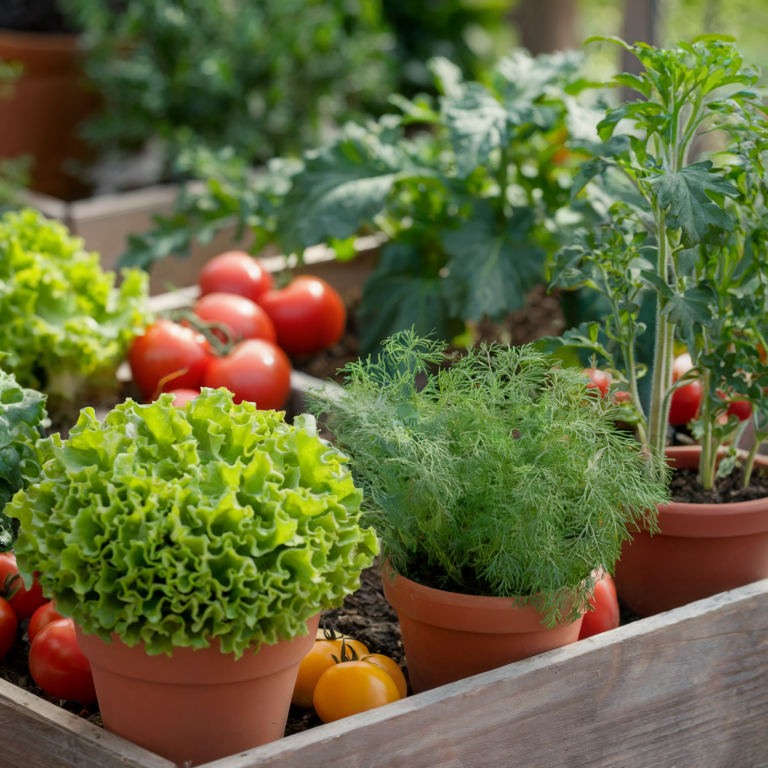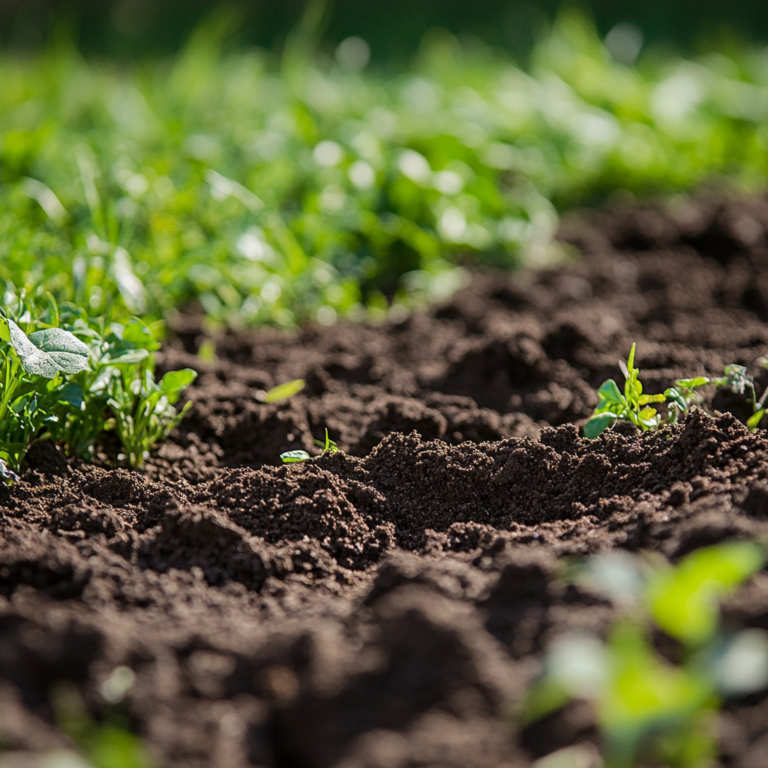We may earn a small commission when you purchase through our affiliate links. This helps fund Quiet Meadows Homesteading and our mission to promote self-reliance. We appreciate your support!
5 Most Common Gardening Mistakes and How to Avoid Them
Gardening is as rewarding as it is messy—and trust me, even the most seasoned gardeners have made their fair share of mistakes. Over the years, I’ve learned a lot (sometimes the hard way), and I’d like to share a few insights that might save you some frustration (and a few extra trips to the garden supply store). Whether you’re a newbie or a seasoned green thumb, here are five common gardening pitfalls and some down-to-earth advice on how to avoid them.
1. Overwatering or Underwatering
Water: the hero for all plants—or the villain of your garden’s story.
The Mistake:
Water is both a gardener’s best friend and worst enemy. It’s easy to fall into the trap of either drowning your plants or leaving them thirsty. Overwatering can lead to root rot and fungal diseases, while underwatering leaves plants weak and struggling for nutrients. I’ve seen too many plants drown in soggy soil or wilt under a relentless sun because they never got enough water.
What’s Really Happening:
You might have the urge to treat your garden like a spa, thinking extra water would make your veggies super juicy. In reality, you will end up with soggy soil and a patch of mold. On the flip side, I’ve seen new homesteaders neglect their watering schedule, leaving their tomatoes and lettuce gasping for moisture under a blazing sun. It’s all about balance. Check your soil—if the top inch is dry, it’s time for a deep, thorough watering.
How to Avoid It:
- Know Your Soil: Different soils hold water differently. Clay soils retain moisture, while sandy soils drain fast. A simple soil test can tell you if your garden needs more or less water. A basic soil moisture meter can help you understand your garden’s needs.
- Water Deeply, Not Daily: Give your plants a good soaking once or twice a week to encourage strong root growth. Check the soil before watering—if the top inch is dry, it’s time to water.
- Use Mulch: A light layer of organic mulch helps retain soil moisture and keep the weeds out.
2. Poor Soil Preparation
Your garden’s success starts from the ground up (no pun intended).
The Mistake:
A garden’s success starts from the ground up. Skipping proper soil preparation is like trying to bake a cake without flour. Without healthy, nutrient-rich soil, your plants struggle to get the nutrients they need.
What’s Really Happening:
My first attempt at planting a garden in my backyard was discouraging. Nothing would grow. Turns out that our soil was actually ‘sand’. There was nothing to hold in moisture and there were no nutrients in the soil. I ended up watering sand for a month! The problem wasn’t the seeds—it was the ground they were in. The opposite extreme can also be a reason for your plants not to grow. Compacted soil, like clay, can keep water on the surface preventing it from soaking into the ground and feeding the roots of your plants.
How to Avoid It:
- Test Your Soil: Invest in a simple soil test kit to check pH and nutrient levels.
- Add Compost: Mix in some homemade compost or well-rotted manure to boost fertility.
- Aerate Your Soil: Breaking up the ground allows water to soak into the soil and gives the roots a chance to breathe.
- Improve drainage: Proper drainage is key to healthy roots.
- Rotate Crops: Avoid planting the same type of vegetable in the same spot year after year; rotating crops prevents soil depletion and pest buildup.
3. Ignoring Sunlight Needs
When it comes to sunlight, not all plants are created equal.
The Mistake:
Planting a shade-loving leafy green in full sun or vice versa can spell disaster. I’ve seen hopes of a bountiful harvest wither away because they were in the wrong light.
What’s Really Happening:
If you plant herbs in a spot that barely gets any sunlight, your basil will end up tiny and bitter. If you attempt to grow delicate lettuce in the hottest part of the yard, your results will end up more like a burnt offering.
How to Avoid It:
- Observe Potential Garden Spots: Observe your potential garden placement throughout the day. Note which areas get full sun and which are more shaded. Years ago, I built a raised garden bed in an area of my yard that I thought provided enough sun. It wasn’t until after I built it, that I realized it was mostly in the shade. Yes, it was sunny in that spot where I first stood and looked at it, but if I had only stayed and observed the actual path of the sunlight, I could have saved myself a lot of heartache when harvest time came. Our plants grew tall and leafy but never produced fruit! Lesson learned: sunlight is key.
- Match Plants to Spots: Use sun-loving plants (like tomatoes and peppers) in bright spots, and keep shade-tolerant crops (like spinach, lettuce, and other leafy greens) in the cooler corners.
- Adjust with Containers: If you’re short on space, containers allow you to move plants to the best available light.
- Artificial Sunlight: Some indoor gardens may require artificial light supplements like LED Grow Lights in order to simulate the photosynthesis process in your plants.
4. Overcrowding Your Plants
More isn’t always merrier. When plants are too crowded, they compete for water, nutrients, and sunlight, often resulting in stunted growth or disease.
The Mistake:
Planting too close together can lead to competition for nutrients, water, and sunlight, making it harder for each plant to thrive. However, if you are working with Hydroponics, you wont need to worry as much about competition for nutrients because there is always a supply of nutrients flowing continuously and directly to the roots of the plants.
What I Learned:
I once densely planted a container pot with potatoes, hoping for a bumper crop, only to end up with a bunch of tiny undernourished potatoes that couldn’t even feed a flea. Thinning out the seedlings, though sometimes painful, can make a world of difference.
How to Avoid It:
- Follow Planting Guidelines: Check the seed packet or plant tag for the recommended spacing.
- Thin Your Seedlings: If plants are too crowded, thin them out early.
Don’t be afraid to remove excess plants. It might hurt to see a few go, but it’s better for the overall garden. - Plan for Maturity Growth: What looks cozy now can turn into a cramped mess when plants fully mature. Consider the mature size of each plant when laying out your garden.
5. Neglecting Regular Maintenance and Pest Control
Your garden won’t maintain itself—regular upkeep is essential.
The Mistake:
Even the best gardens need a little TLC. Neglecting regular weeding, pest control, or pruning can let small issues snowball into major problems. It’s easy to get excited when your garden is flourishing and then forget about it once the initial bloom fades. Neglecting regular weeding, pest control, and pruning can turn your garden from a vibrant paradise into a chaotic mess.
What’s Really Happening:
There was a season when I unable to tend to our garden, and before I knew it, weeds had taken over, and pests were having a field day.
How to Avoid It:
- Schedule Regular Checks: Set aside a bit of time each week to walk through your garden. Keep an eye on pests, weeds, and plant health.
Even 10 minutes a week of weeding, checking for pests, and trimming can keep your garden healthy. - Natural Pest Control: Try using companion planting or natural remedies like garlic sprays or neem oil to keep pests in check without resorting to harsh chemicals. Don’t forget, you can also use a Chicken for Pest Control!
- Prune and Thin: Regular monitoring helps catch problems before they become big issues. Remove dead leaves and prune plants to encourage healthy growth.
Wrap-Up
Vegetable gardening is a journey filled with learning curves, funny mishaps, and eventual triumphs. Remember, Every Great Homestead Began with a Single Seed—and every mistake is a stepping stone to growth. By avoiding overwatering, preparing your soil properly, matching plants to the right sunlight, giving them enough room, and staying on top of maintenance, you’ll set yourself up for a bountiful harvest.
If you enjoyed these insights, subscribe for more straightforward gardening tips and check out our other posts on Organic Gardening Tips and Container Gardening for City Dwellers for more detailed advice. Have you experienced any of these mistakes in your own garden? Share your stories in the comments!
Here’s to growing something amazing!




